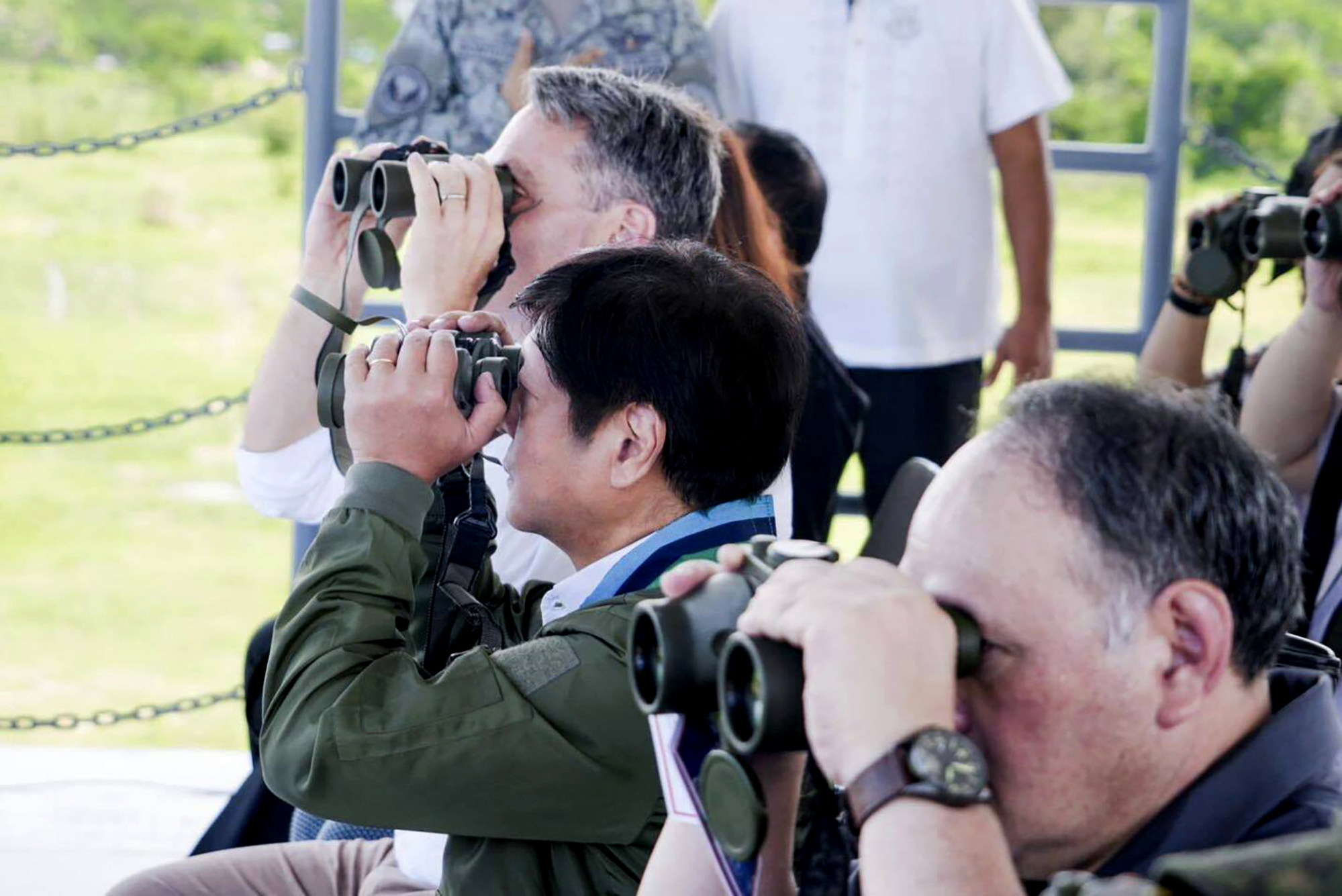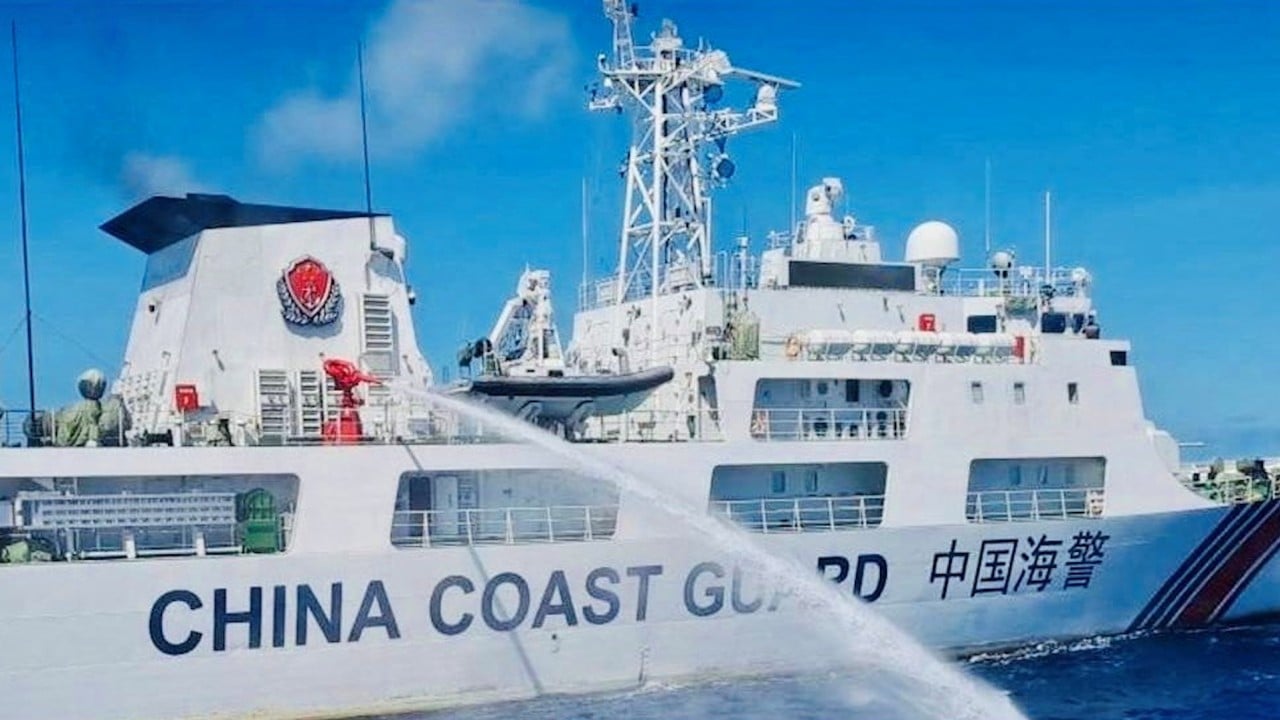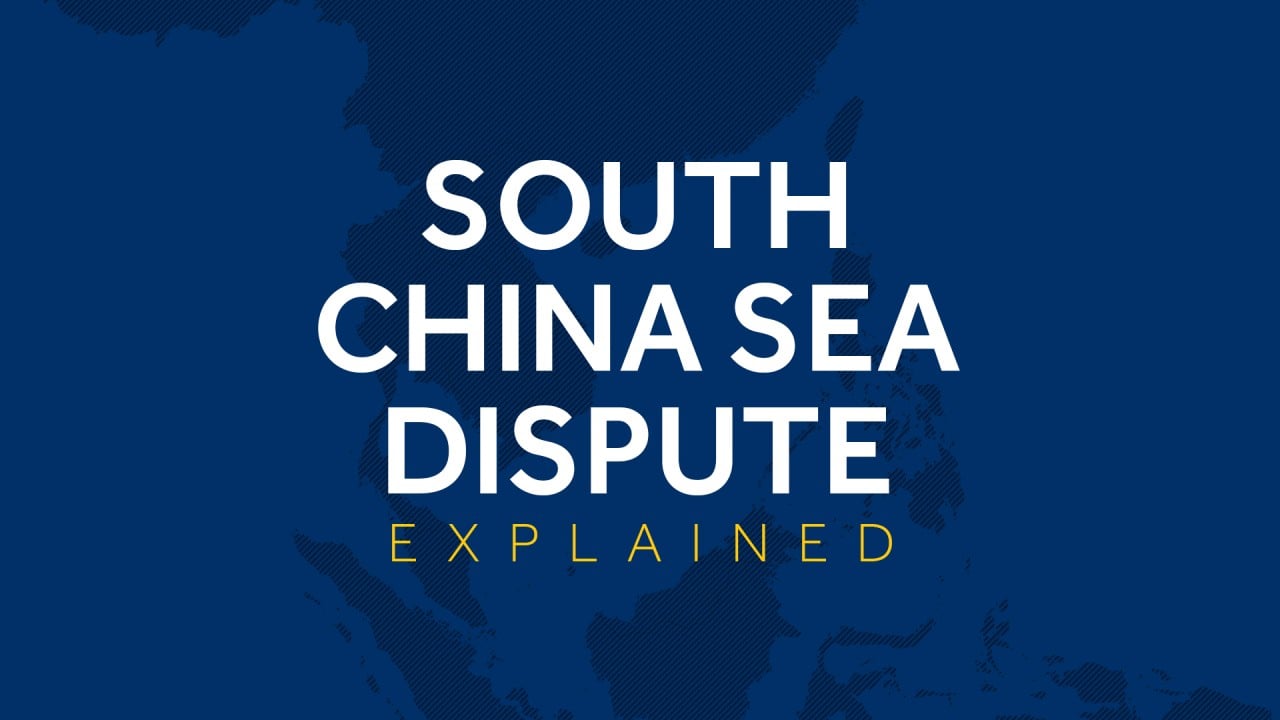
South China Sea: showdown at Second Thomas Shoal may be hard to avoid
- The recent confrontations between Chinese and Philippine coastguard ships near the shoal raise questions about whether a more heated conflict is inevitable
- Western powers committing to joint patrols of the area with the Philippines only ups the ante
Last week, China, the Philippines and its US ally avoided a showdown at Second Thomas Shoal in the South China Sea. How was it avoided and what happens next?
Given the history and context, this attempt to deliver supplies was a challenge to China. A confrontation seemed imminent. Something had to give – and it did.
The Chinese coastguard ships repeatedly crossed the bows of the Philippine coastguard vessels. Eventually, the two Philippine supply vessels were able to approach the Sierra Madre and deliver their cargo. All the while, a US surveillance plane circled overhead.
The Philippines said the mission was the exercise of its “sovereignty, sovereign rights and jurisdiction within our maritime zones” and “not subject to any other country’s approval”. Manila had invited a group of journalists to join the mission, and the incident was widely reported in the West.
It is not clear whether the supply vessels were allowed to pass or if they outmanoeuvred the Chinese coastguard. If the latter, China is rationalising the result. It did demonstrate its control of the area in that the Chinese coastguard vessels did not leave until after the Philippine coastguard vessels had left.
Even if China showed relative restraint this time, was this a one-off or the new status quo? Neither China nor the Philippines are likely to accept such a status quo and this game of chicken is certainly not over.
The problem for the Philippines is that, according to a 2016 ruling by a tribunal at the Permanent Court of Arbitration in The Hague, the feature is on its continental shelf and in its exclusive economic zone and to accept the new “status quo” would mean that it is implicitly recognising China’s claim. But because the shoal is submerged, China’s recognition of the Philippine claim would negate its own historical claim to much of the South China Sea.
The potential for a showdown involving the US still exists. The Philippines has said that the missions will continue “on a regular basis”. After the August 23 incident, Admiral Samuel Paparo, commander of the US Pacific Fleet, said the US is prepared to assist the Philippines if China interferes with Manila’s efforts to resupply its forces on the Sierra Madre.

If the US does take part in a joint patrol, it would probably use a coastguard vessel. What happens next is anyone’s guess – perhaps water cannon and manoeuvring contests between coastguards. This would be the top rung on the “grey” scale and could easily and quickly transition into the use of navy ships by both sides.
Warmongers are calling for the US to back up its words with action. The US seems to be counting on the Philippines not to escalate the situation or, if it does, on China backing down because of the US threat. This could well be a miscalculation.
The convergence of tactical trajectories may well lead to a showdown at Second Thomas Shoal. The next move is in the hands of the Philippines or China. Stay tuned.
Mark J. Valencia is a non-resident senior research fellow at the Huayang Institute for Maritime Cooperation and Ocean Governance



